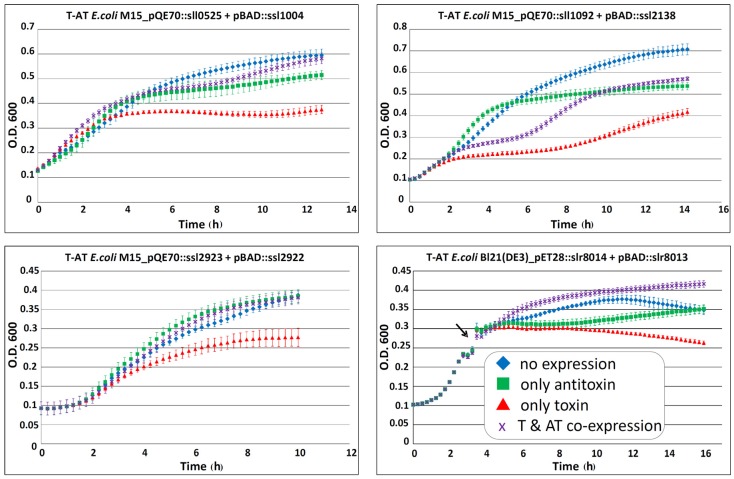Figure 3.
Effect of potential cyanobacterial toxin and antitoxin overexpression on growth of E. coli M15(pREP4) and Bl21(DE3) Rosetta™ harboring the plasmids pQE70::toxin or pET28a(+)::toxin and pBAD::antitoxin. Multiple TA systems were tested: genes sll0525–ssl1004; sll1092–ssl2138; and ssl2923–ssl2922; slr8014–slr8013. Expression of the potential toxins causes growth inhibition in the expression strains (red triangle), which can be prevented by co-expression of the respective antitoxin (purple crossed). Strains without expression are indicated by the blue diamond lines, and lone expression of antitoxin is indicated by the green square lines. The experiments were performed in duplicates or triplicates, and standard deviations are indicated. T-AT, toxin–antitoxin; O. D., optical density; T & AT co-expression, toxin and antitoxin co-expression. For studying slr8014–slr8013, the culture was grown in LB medium to an optical density (O. D.) of ~0.3 and then split (indicated by the black arrow). Subsequently, the effect of lone toxin expression (red triangle), antitoxin expression (green square lines), co-expression (purple crossed) and the untreated control (blue diamond) was measured as described above.

